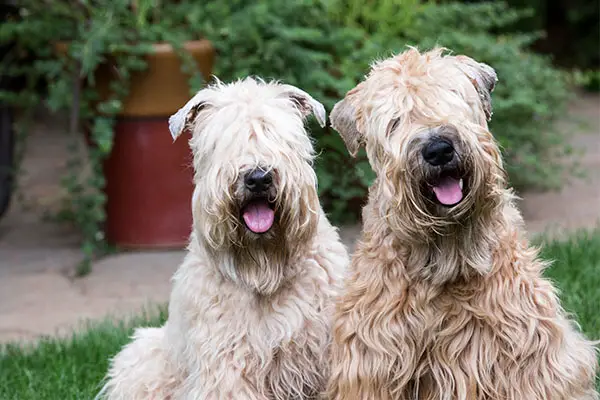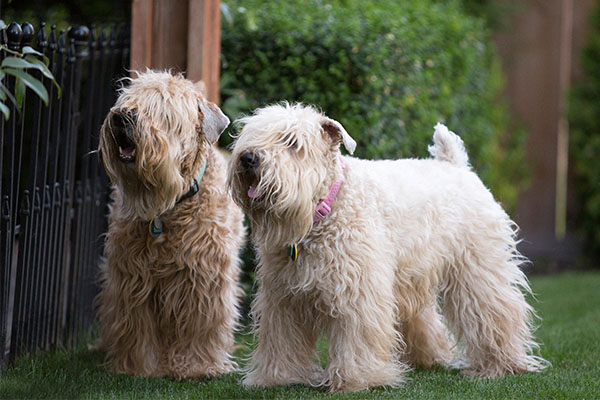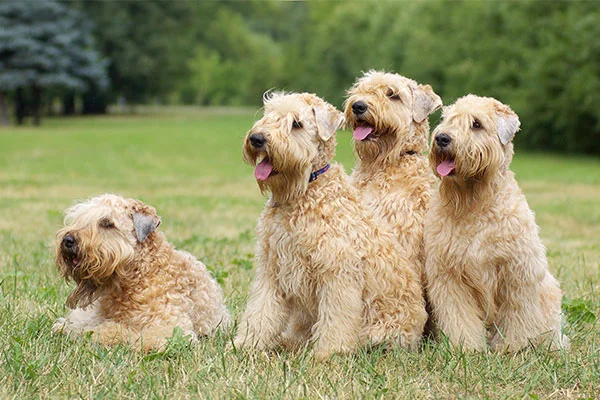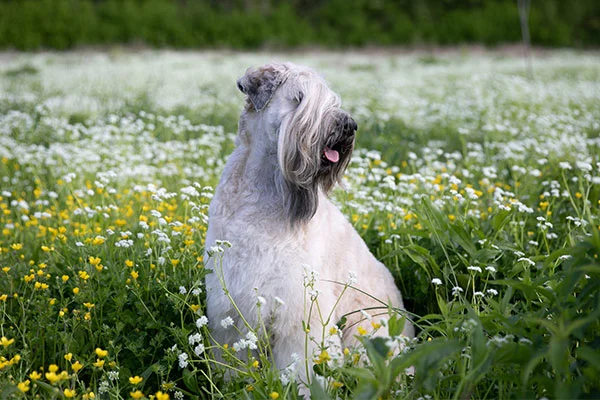The enthusiastic Irish farm dog, the Soft Coated Wheaten Terrier, is joyful, friendly, profoundly devoted, and just stubborn enough to remind you that he’s a terrier. The wheaten coat is low-shedding but requires careful grooming to avoid matting. The silky, gently undulating coat of these cheerful extroverts distinguishes them from other terriers. It ranges from a soft beige to gleaming gold, reminiscent of maturing wheat. Wheatens are square, strong terriers who stand 19 inches tall and weigh 40 pounds. They have a peek-a-boo haircut and a dashing beard. The overall impression is of a hard-muscled but soft-coated working terrier, or an iron fist in a velvet glove, as the breed has been described.
Soft Coated Wheaten Terrier
Average sizes and life
expectancy of the breed.
Height
18-19 inches (male)
17-18 inches (female)
Weight
35-40 pounds (male)
30-35 pounds (female)
Life Expectancy
12-14 years
Breed Traits & Characteristics
About the Breed

Owning a dog is not just a privilege; it’s a responsibility. They depend on us for, at minimum, food and shelter, and deserve much more. When you take a dog into your life, you need to understand the commitment that dog ownership entails.
 Health
Health
Recommended Health Tests From the National Breed Club:
- Hip Evaluation
- Complete Blood Count (CBC)
- Urinalysis
- UPC/Micro Albumin (MA) Test
- Serum Chemical Screen
- Protein Losing Nephropathy - Variant 1 (PLN) - DNA Test
- Protein Losing Nephropathy - Variant 2 (PLN) - DNA Test
- Ophthalmologist Evaluation
 Grooming
Grooming
 Exercise
Exercise
 Training
Training
 Nutrition
Nutrition
History
Reams of excellent literature, a tremendous smooth whiskey, and three gorgeous long-legged terriers: the Wheaten, Kerry Blue, and Irish are among Ireland’s gifts to civilization. They all have a common ancestor and were bred for comparable reasons. Wheatens were expected to execute a variety of farm jobs, including ratting, guarding the chicken coop, and even herding or bird-dogging. They were entertaining fireside companions when the day was done, a position they still enjoy—even if the hearth has been replaced by a TV.





